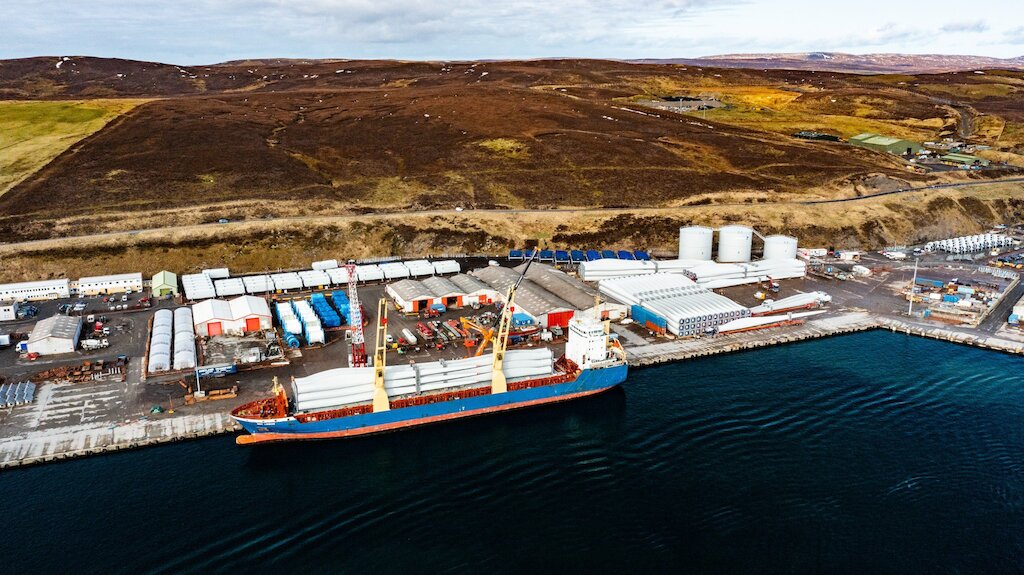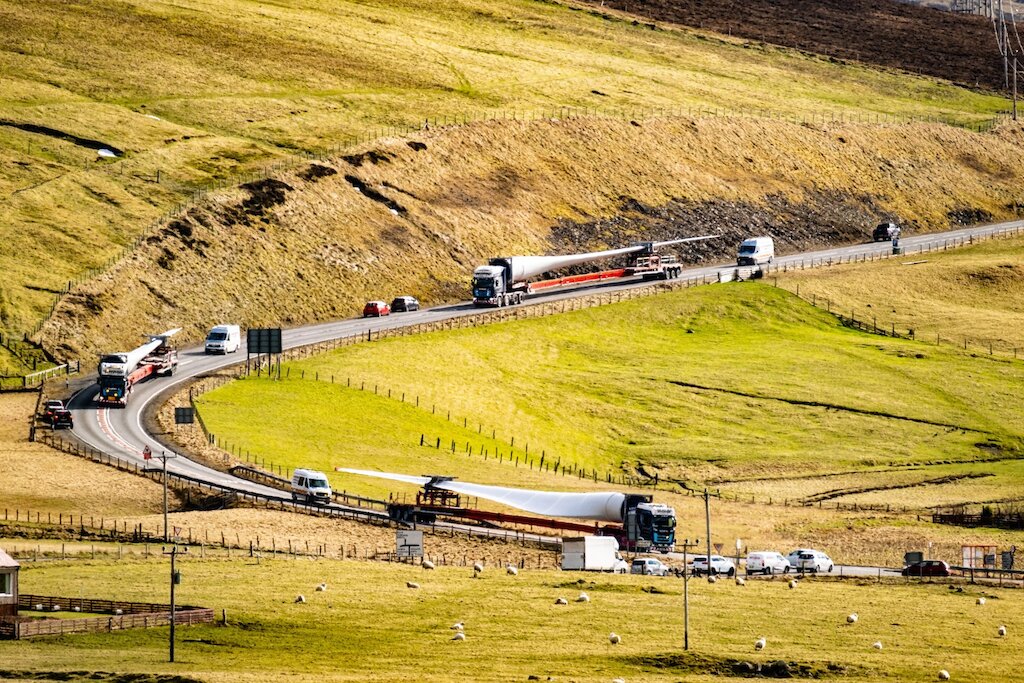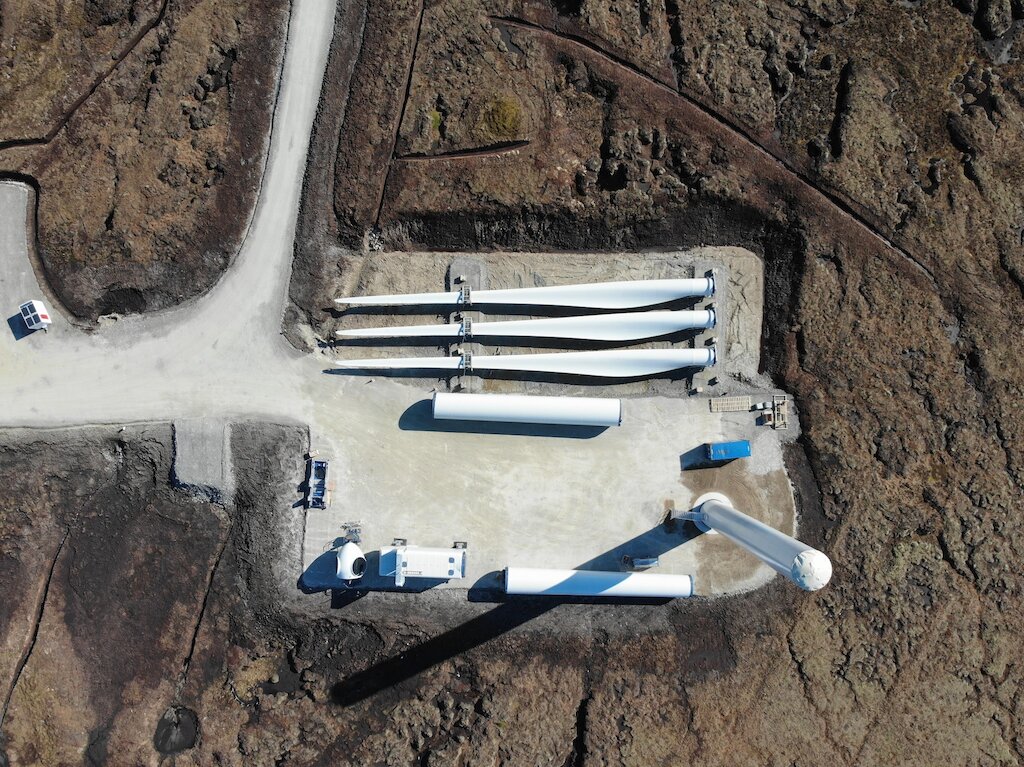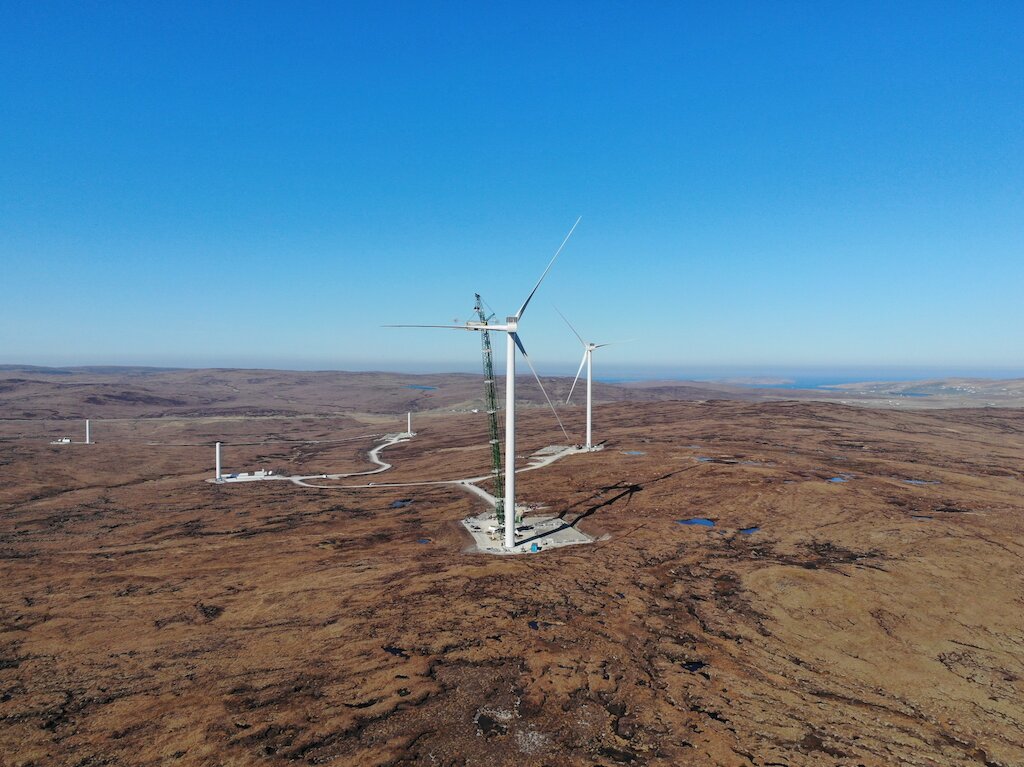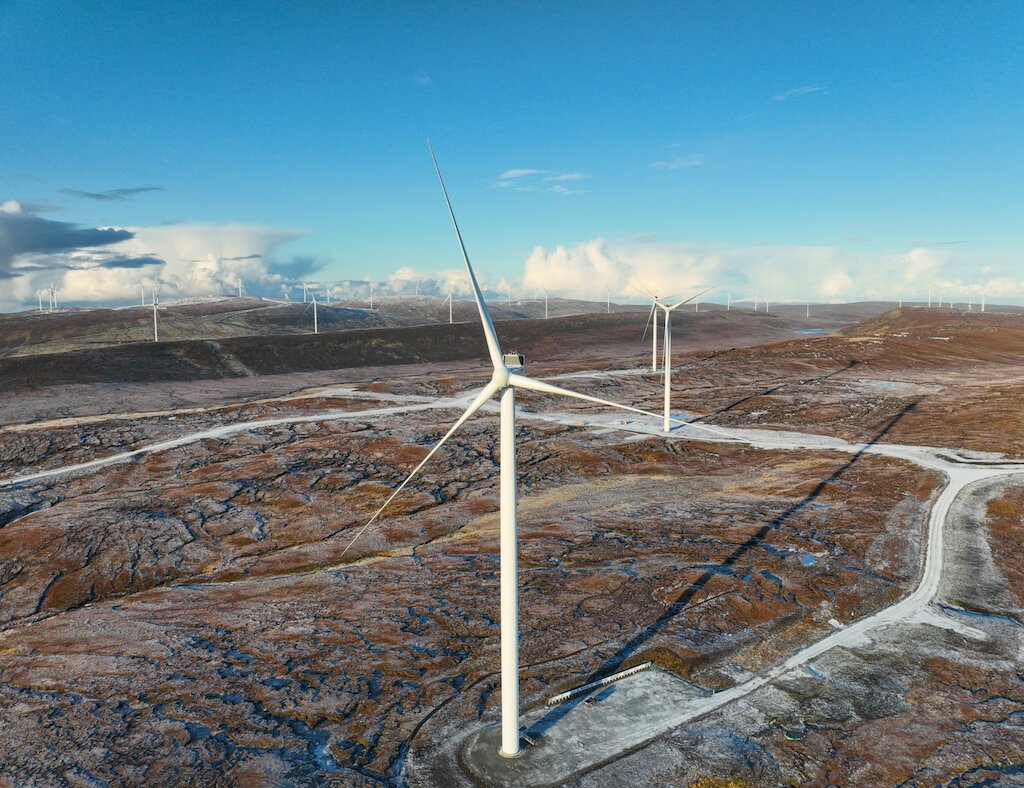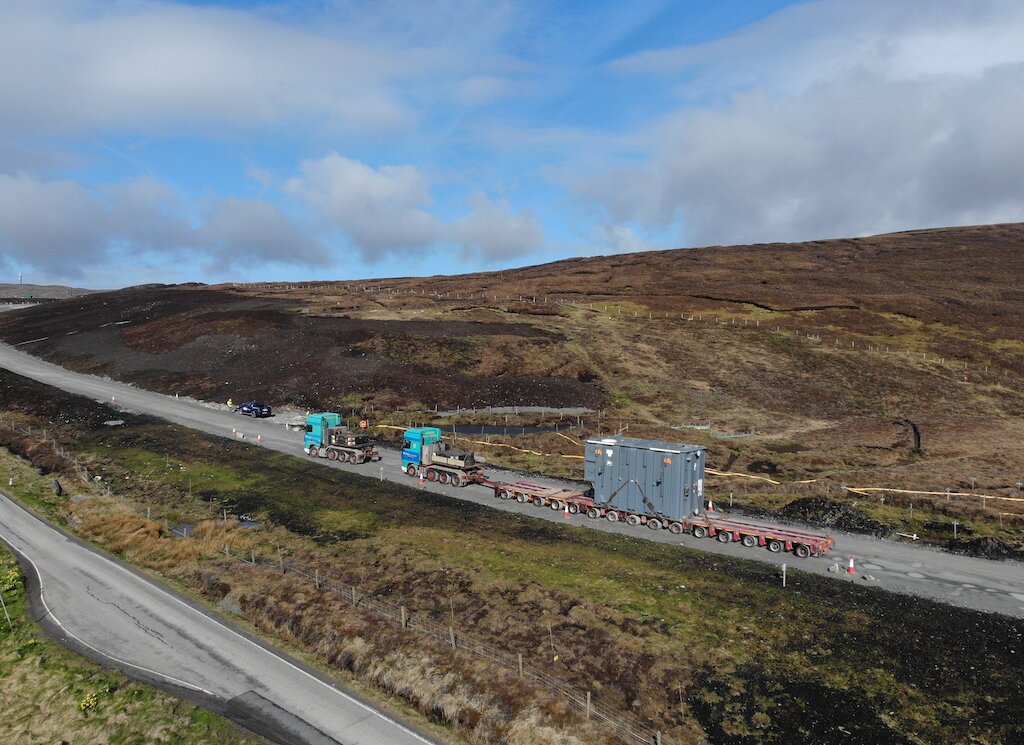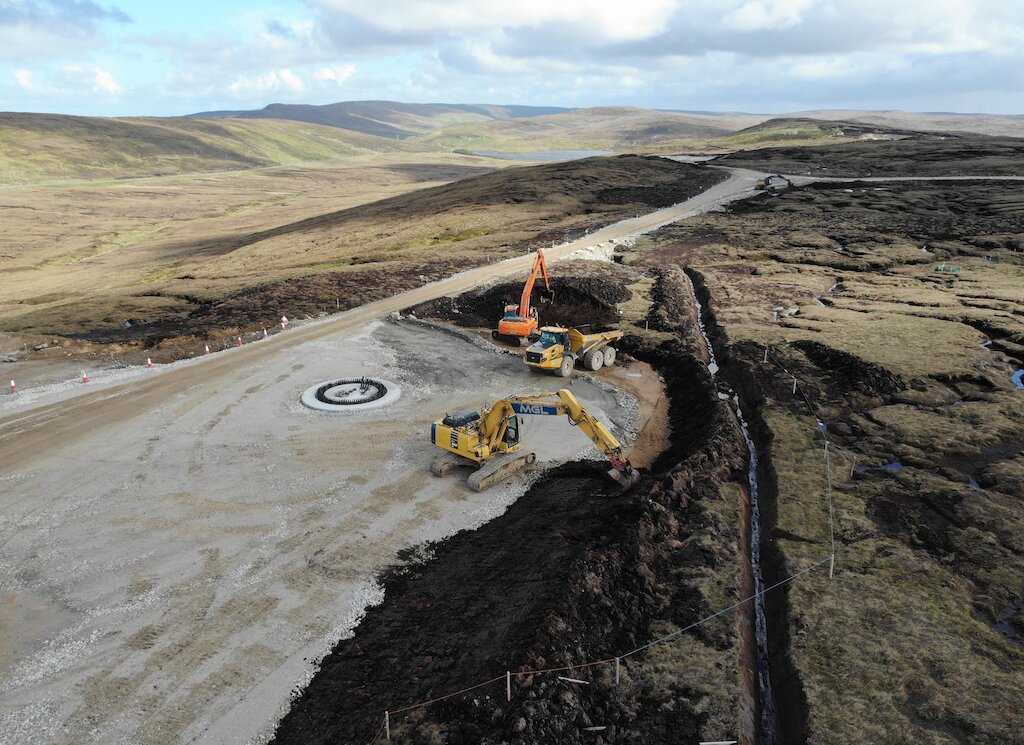Safely delivering and installing 103 wind turbines
In February 2023, the Viking construction team celebrated the safe arrival of the first wind turbine components at the construction site.
Before the deliveries to site could begin, the turbine components were delivered by ship to the Greenhead Base in Lerwick for storage ahead of delivery to the wind farm.
Delivering components
Each Viking wind turbine consists of four tower sections, three blades, a nacelle and a hub and a drivetrain, with a combined weight of around 456 tonnes. The turbine blades were the longest components to be delivered with each being 60m long. Laid end to end, the blades would stretch around 19km which is around the same distance as travelling from Lerwick to Scalloway and back.
Due to the size of the components, deliveries were undertaken using specialist delivery vehicles under Police escort to ensure that deliveries could be made safely and with minimal disruption to other road users. The journey time for each convoy, each with up to four components, was up to an hour and journeys were completed outside of the morning and evening periods when the public road network was likely to be at its busiest, thereby reducing potential disruption.
Once on site, the components were stored at each of the 103 turbine locations in readiness for installation.
Lifting preparation
Safety was the most important consideration throughout Viking's construction and the process of installing the turbines was no different. Installation involved using heavy cranes to lift the components, some with a combined weight heavier than 100 tonnes, to a height of almost 100 m in the air to be bolted to the other components.
To do this safely, each crane lift was carefully planned, risk assessed, supervised and executed by specialist teams with as much work as possible completed on the ground (in terms of preparing the components) to reduce the amount of working at height that was needed by the installation personnel.
To prepare and operate the cranes safely, the civil engineering design of the wind farm includes a specialist crane pad, built adjacent to every turbine foundation for the cranes to set up on. The pads are flat and designed to withstand the many tonnes of downward pressure that the cranes apply to the ground when doing the lifts.
The assembly of each turbine was completed in two phases, with the first being the installation of the first two of the tower sections. The first turbine to reach this stage of assembly was completed on 1st March 2023.
The pre-assembly phase
The first stage of installation was known as pre-assembly and the first component to be erected was the tower. The Viking turbines towers were transported to site as four separate tubular steel sections. A pre-assembly crane lifted the base tower onto the foundation and the installation team securely bolted the tower to the foundation.
The crane then lifted the second tower section on top of the base tower and the two were bolted together. There are ladders and platforms within the tower sections that allowed the installation team to climb inside the tower and complete the bolting operation.
The first turbine to reach this stage of assembly was completed on 1st March 2023.
The main installation phase
Once a number of the turbines had reached the end of the pre-assembly phase, a larger 'main' crane was mobilised to complete the assembly work. The main crane was required due to the need to lift the components even higher.
The main crane began by lifting the remaining two tower sections into place (one at a time), in a similar manner to the pre-assembly crane, followed by installing the nacelle and drivetrain on top of the tower.
The nacelle is the box-like structure that sits on top of the tower and houses the drive train and the power generation equipment.
The hub was then lifted and secured to the front of the nacelle. The hub is the central part of the rotor that the blades connect into.
Each of the three blades were lifted in to place, one at a time with the hub being prepared and securely positioned ready to receive each one.
A specialised “blade gripper” was attached to the crane and the blade at the blade’s center of gravity. The blade was then lifted, remaining horizontal. Once the blade was docked with the hub, the installation team climbed into the hub and bolted the blade into position. The hub and blade was then rotated 120⁰ to allow the second blade to be installed following the same procedure and then the process was repeated one more time until all three blades were securely attached.
A significant milestone
The final turbine was fully installed in mid-August 2023, well ahead of schedule and just over six months since turbine installation had begun.
In reaching this milestone, the project teams had successfully delivered more than 1,000 turbine components via around 280 road convoys and then assembled those component while battling some very challenging weather conditions including frequent heavy rain and the biggest snow storm to hit Shetland in over 20 years and rolling fog which drastically reduced visibility across the site.
However, the biggest challenge was the wind, with speeds often reaching over 78mph. The team worked to track every weather window, allowing them to continue to make significant progress, whilst safely lifting each component in place.

